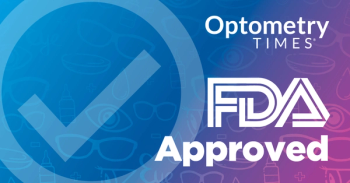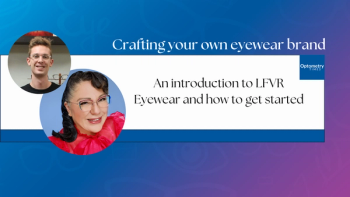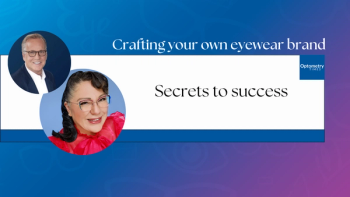
ODs must embrace new technologies, says AOA panel
Disruptive technology is here to stay, and ODs must embrace it as new technologies continue to be developed and patients are eager to get their hands on them.
Washington, DC-Disruptive technology is here to stay, and ODs must embrace it as new technologies continue to be developed and patients are eager to get their hands on them, says Deanna S. Alexander, OD, FAAO, chair of government relations committee; David A. Cockrell, OD, chair of the AOA Advocacy Group; and Steven Loomis, OD, immediate past president of the AOA, in a panel discussion at the American Optometric Association’s Optometry’s Meeting.
“We need to continually balance patient safety and health while still being open to change,” says Dr. Alexander. “We need to be in the game, and the game is changing.”
As companies continue to develop new apps and websites allow patients to have their eyes examined and their prescriptions renewed, ODs have been reluctant to jump on board with standards of care in question.
Related:
Apps can be good for some
“It comes down to standard of care,” says Dr. Loomis. “If you are in sub-Saharan Africa, are living on less than $1 a day, and the ratio of population to eye doctors is low, the standard of care is essentially zero.”
Dr. Loomis says that in countries which lack accessible care, these new technologies can help.
“These patients don’t have access to care,” says Dr. Loomis. “Access to some care is better than access to no care. From a humanitarian aspect, it makes some sense.”
As these technologies come into play in the U.S., ODs must reconsider what is standard of care.
“Improved access to inferior care is never a step forward,” says Dr. Loomis.
Related:
Popular options that are currently on the market include:
• Simple Contacts-An app to renew contact lenses online. It costs $10, then you can purchase your contact lenses online through the company. It is currently functioning in about 40 states.
• Opternative-An eye test that is registered with the FDA but not FDA approved. The company sends an Rx signed by an ophthalmologist after performing an online refractive eye test. The procedure is $40 for glasses and $60 for contact lenses.
• InstaRx-Created by Opternative and 1 800 Contacts partnership. For $20 patients can renew their contact lens Rx online.
• EyeQue-Smartphone adapter for auto refraction. It costs patients $29.99.
• SVOne- Auto-refraction equipment aimed to skip the visit to the OD and optical shop, according to Dr. Alexander.
These companies use ophthalmologists to sign their Rxs, and they suggest their customers should have a comprehensive eye exam.
The question remains if these new technologies are safe care-they may weaken the doctor-patient relationship leaving many underlying conditions undiagnosed.
These apps tend to follow the telehealth model-meaning they have a broader consumer approach that often times bypasses the optometric profession in many ways.
Underlying disease may go undetected
The risk of diabetes, cataracts, and macular degeneration increase with age. By using these services in place of a comprehensive eye exam, patients may leave themselves at risk.
“In 2014, demographics shifted dramatically,” says Dr. Loomis. “The age 65-85 population exceeded the age 45-65 population-that has never happened. When population increases, so does the risk of eye and systemic disease. The need for the kind of care we provide is increasing when we’re being told by some of these technologies that it’s not as important.”
How does an OD convince his patients of the value of the doctor-patient relationship? It starts with education.
“Patients have to understand the value that you provide,” says Dr. Loomis. “ODs don’t simply prescribe a pair of glasses or contact lenses, ODs monitor eye and physical health.”
The best educator for patients is their doctor. When you see that patient, you should be discussing the healthcare implications of the exam you are performing. The front line of defense is reestablishing the doctor-patient relationship, according to the panel.
The industry consumer awareness program
“We are not the first healthcare profession to deal with these disruptive technologies,” says Dr. Alexander. “Outlining guidelines and standards to patients is key in keeping the quality of care high.”
Related:
Regulating online apps
Consumer protection continues to be a concern for ODs because regulating these apps is still ongoing.
“A few states were forward thinking and passed laws about separating the ocular health from the refractive part of the exam,” says Dr. Alexander.
Those states are:
• 2014: Michigan and Alabama
• 2015: Maine
• 2016: Nebraska, South Carolina, and Georgia
• 2017: Virginia
State laws vary, which is why the panel says there is need for a federal regulatory effort.
“We are required to wear seatbelts, my grandkids must ride in car seats-these are federal laws designed to protect us,” says Dr. Loomis. “ODs are helping protect patients from industries that diminish a comprehensive eye exam.”
Technology is hurtling down the tracks and can’t be stopped, and ODs must get on board, says the panel.
“Business moves faster than we do because these companies see an opening because patient protection laws aren’t out there,” says Dr. Cockrell. “Venture capitalists are behind these apps. We can’t avoid technology. We have to be able to use it to be the intermediary for the patients.”
Getting involved in your state legislation is the best way to help move technology forward, says Dr. Cockrell.
“When you take a position that seems to be standing in the way of patients having increased access, flags pop up that you appear to be anti-access or protecting your turf,” says Dr. Loomis. “It goes back to standard of care. Is this technology exceeding standard of care? Is it equal to an in-person examination by a doctor?”
All of the things we expect to see in a face-to-face doctor-patient relationship should be reflected in a technological examination performed by an app, according to the panel.
So how can ODs hold up these standard of care with technology rapidly advancing? A good model to follow may be Medicare.
“The example set by Medicare is a good one,” says Dr. Cockrell. “You have to have at least one in-person visit with the patient on record, and there has to be at least one face-to-face visit per year.”
Related:
Managing patients and technology
It is important to find a balance between technology and standards of care. As new apps continue to be developed and marketed to patients, ODs must continue to educate patients to help protect their health.
“We’re here because we care about our patients,” says Dr. Loomis. “We want them to receive good care and have access to good technologies that help them. We’re also here to be sure they’re not mislead by technologies that won’t help them.”
Dr. Cockrell says it’s easy to lose sight that now is the most exciting time to be an optometrist with new technologies entering the marketplace. To alleviate the pain of these new apps and services patients desire, ODs must continually balance patients’ safety and health but be aware of new technologies.
“Number one way to alleviate that pain is to be involved in your state association to help change those laws,” says Dr. Cockrell.
Newsletter
Want more insights like this? Subscribe to Optometry Times and get clinical pearls and practice tips delivered straight to your inbox.


















































.png)


